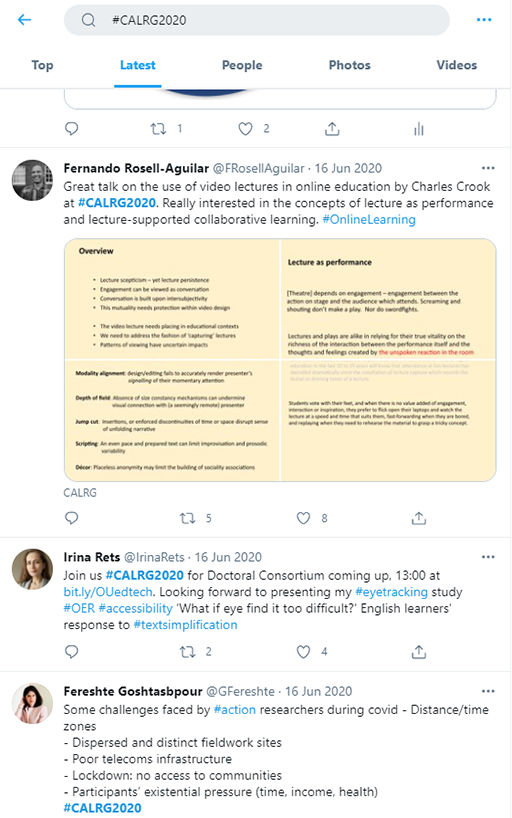3 Learner anonymity, backchannels and social interactions
In some online learning environments, all interactions through channels provided by the organisation will be obviously attributable to individual students. Forum posts will usually only be possible from students’ institutional accounts, and therefore their name will be attached to everything they contribute. Similarly, login information for synchronous online events will usually be provided by the institution and will identify each student clearly. However, there may be circumstances where this kind of information is not provided by default, and students can choose to create accounts that do not identify who they are.
Anonymity can have a great advantage for learners who are reluctant to contribute under their own name, for fear of giving an incorrect answer, for example, and can be enabling for an entire cohort if discussing very sensitive topics. However, it can also embolden troublemakers or more dominant personalities, and because of this it can be challenging for the educator to moderate activities where interactions are anonymous.
Any online learning activity carries the possibility of interactions developing between learners in spaces away from the official locations for the online learning, for example, in a student-initiated WhatsApp group. These are known as backchannels, and while there can be concerns about the lack of control over these communications, more often they can be useful to learners (Fiester & Green, 2016). For example, if learners are in touch with each other via an instant messaging app during a synchronous online learning event, they can often help each other to understand the issues covered without having to declare more publicly that they need assistance. This can lead to a greater collective advance in learning than would happen if only the official channels were used.
It is important to consider how to encourage and structure effective use of backchannels. One example of backchannels being used to great effect is the use of Twitter and a dedicated hashtag to synthesise and discuss presentations during conferences. For example, the following image shows some of the uses of the hashtag #CALRG2020 during the CALRG (Computers and Learning Research Group) 2020 annual conference:

